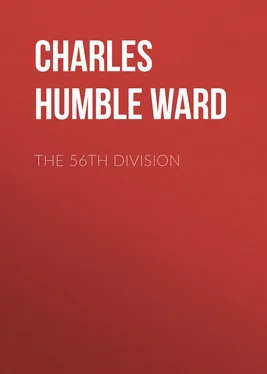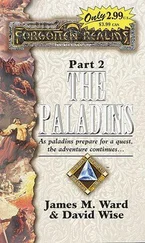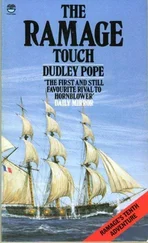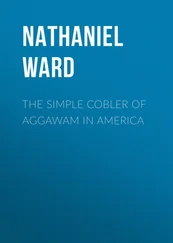Charles Humble Dudley Ward - The 56th Division
Здесь есть возможность читать онлайн «Charles Humble Dudley Ward - The 56th Division» — ознакомительный отрывок электронной книги совершенно бесплатно, а после прочтения отрывка купить полную версию. В некоторых случаях можно слушать аудио, скачать через торрент в формате fb2 и присутствует краткое содержание. Жанр: foreign_prose, История, foreign_edu, foreign_antique, на английском языке. Описание произведения, (предисловие) а так же отзывы посетителей доступны на портале библиотеки ЛибКат.
- Название:The 56th Division
- Автор:
- Жанр:
- Год:неизвестен
- ISBN:нет данных
- Рейтинг книги:5 / 5. Голосов: 1
-
Избранное:Добавить в избранное
- Отзывы:
-
Ваша оценка:
- 100
- 1
- 2
- 3
- 4
- 5
The 56th Division: краткое содержание, описание и аннотация
Предлагаем к чтению аннотацию, описание, краткое содержание или предисловие (зависит от того, что написал сам автор книги «The 56th Division»). Если вы не нашли необходимую информацию о книге — напишите в комментариях, мы постараемся отыскать её.
The 56th Division — читать онлайн ознакомительный отрывок
Ниже представлен текст книги, разбитый по страницам. Система сохранения места последней прочитанной страницы, позволяет с удобством читать онлайн бесплатно книгу «The 56th Division», без необходимости каждый раз заново искать на чём Вы остановились. Поставьте закладку, и сможете в любой момент перейти на страницу, на которой закончили чтение.
Интервал:
Закладка:
Sergt. W. G. Nicholls had kept a party of bombers together and, led by a young lieutenant of the Cheshire Regt., whose name unfortunately is not mentioned [we believe it was 2/Lieut. G. S. Arthur], this party forced its way from the Cemetery to the Quadrilateral. The names of some of the men are given by Col. Shoolbred:
“Cpl. R. T. Townsend, L/Cpl. W. C. Ide, Cpl. Hayward, Rfn. F. H. Stow undoubtedly did reach the Quadrilateral, where strong enemy bombing parties met them, and the Cheshire lieutenant ordered the party to retire, apparently trying to cover their retirement himself, as he was not seen again.”
In any case this advance into the Quadrilateral was but a momentary success, and it may be said that the attack never got beyond the German third line. Signals were picked up by the artillery observers calling for bombs. As early as 10 a.m. two parties of London Scottish, each fifty strong, attempted to take bombs across to their comrades. None got to the German first line, and only three ever got back to ours.
About midday the enemy was launching concerted counter-attacks from all directions. He was coming down Epte, Ems, and Etch, he was coming from Gommecourt Park, he was in Fall on the right. More desperate attempts were made to reinforce the hard-pressed troops. Capt. P. A. J. Handyside, of the 2nd London Regt., led his company out to try and reach the left of the line. He was hit, but struggled on. He was hit again and killed as he led a mere half-dozen men into the German first line.
Capt. J. R. Garland, also of the 2nd London Regt., attempted the same feat with his company, and met with a like fate. All the officers of both companies were casualties.
At 2 p.m. the London Scottish still held firm on the right and the London Rifle Brigade on the left—indeed, 2/Lieut. R. E. Petley, with thirty men, hung on to Eck three hours after the rest of his battalion had been ordered to fall back on Ferret, the German first line. But, although the two flanks held, the troops in the centre were gradually forced back until isolated posts were held in the second German line. By 4 p.m. nothing more was held than the German first line.
By 9 p.m. everyone who could get there was back in our own lines.
But we must not leave our account of the fighting with the story of the 46th Division untold. It was not unreasonable for the men of the 56th Division to hope, while they were being hardly pressed, that the 46th Division might suddenly come to their aid. Perhaps luck would favour that division!
The attack from the north was launched between the Gommecourt road and the Little Z. The 137th Brigade, with the 6th South Staffordshire Regt. on the right and the 6th North Staffordshire Regt. on the left, had Gommecourt Wood in front of them. The 139th Brigade, with the 5th Sherwood Foresters on the right and the 7th Sherwood Foresters on the left, carried the attack up to the Little Z.
The account of this action is one long series of disasters. It seems that the South Staffords on the right started by getting bogged in the mud. A new front line had been dug, but they could not occupy it for this reason. They filed out through gaps in their wire, and if any succeeded in reaching the German front line it was for a period of minutes only. The North Staffords fared no better, though a few more men seem to have gained the enemy first line, but were, however, quickly forced out. The utmost confusion reigned in that part of the line, and the attack, from the very start, was futile.
The 5th and 7th Sherwoods got away to time (7.30), but
“there was a little delay in the fourth wave getting out, owing to the deep mud in the trenches, and still more delay in the carrying parties moving up (due to a similar reason), and also on account of the enemy barrage of artillery, rifle, and machine-gun fire which became very heavy on our old front line.... Of the 5th Sherwoods the first and second waves reached the enemy first line fairly easily, but were scattered by the time this occurred. The third and fourth waves suffered severely in crossing from machine-gun fire. The majority of the first and second waves passed over the first-line trenches, but there is no evidence to show what happened to them there, for not a man of the battalions that reached the German second line has returned. The remaining waves … found that the enemy, who must have taken refuge in deep dugouts, had now come up and manned the parapet in parties. The Germans were noticed to be practically all bombers.... The first three waves of the 7th Sherwoods (the left of the attack) moved out to time and found the wire well cut. So far as is known, only a small proportion of these three waves reached the German second line, and after a bomb fight on both flanks, the survivors fell back on the German first line, where they found other men of the battalion consolidating. After expending all their bombs in repelling a German counter-attack, the survivors retired over the parapet.”
One can therefore say that, half an hour after the attack was launched, the Germans in the Gommecourt salient had only the 56th Division to deal with. We know that the Cemetery was seen to be occupied by our troops about nine o’clock, and it was probably shortly after this that the party of Queen’s Westminster Rifles, led by the gallant lieutenant of the Cheshires, reached the Quadrilateral. But the Germans were then masters of the situation on the north of the salient and, freed from all anxiety in that quarter, could turn their whole attention to the 56th Division. Up to this time fighting had been hard, but slow progress had been made, and with even moderate success on the part of the 46th Division, depression and bewilderment might have seized the enemy. But he turned with elation to the southern attack, and shortly after 9.30 a.m. small parties of bombers were seen moving through Gommecourt Park to attack the London Rifle Brigade, and strong attacks were launched from the east of Gommecourt village.
For the rest of the day no help came from the 46th Division, though a new attack was ordered, postponed, and postponed again. The plan was to reorganise assaulting waves from the carrying parties, and at 3.30 in the afternoon it seemed probable that an attack would materialise, but it did not. It was perhaps as well, for by that time the 56th Division occupied the German front line only, and that in very weak strength.
As night fell all became quiet. The 167th Brigade relieved the 168th on the right; the 169th reorganised.
General Hull’s conclusions on this action are that
“the primary reason for failing to retain the ground was a shortage of grenades. This shortage was due to:
( a ) The enemy’s barrage, and in a lesser extent the machine-gun fire from the flanks, which prevented supplies being carried across No Man’s Land.
( b ) To the breadth of No Man’s Land.
( c ) Possibly to insufficient means of collecting grenades and S.A.A. from men who had become casualties, and from German stores.
I understand that our counter-battery groups engaged a very large number of German batteries—the results were not apparent, and I think this was due to the limited number of guns available, and also to the small calibre of the majority employed (60-pounders, 4·7 guns, and 4·5 howitzers). I consider it would be better to employ the heavy (9·2) and medium (6) howitzers, and even the super-heavy.
It was particularly noticeable that, once our attack was launched, the Germans attempted practically no counter-work.
The preliminary bombardment started on the 24th June, and continued for seven days. During this period the enemy seemed to have increased the number of his batteries.... The effect of the bombardment on the German trenches was very great … on the dugouts the effect was negligible. On the moral of the enemy the effect was not so great as one would have hoped....
Читать дальшеИнтервал:
Закладка:
Похожие книги на «The 56th Division»
Представляем Вашему вниманию похожие книги на «The 56th Division» списком для выбора. Мы отобрали схожую по названию и смыслу литературу в надежде предоставить читателям больше вариантов отыскать новые, интересные, ещё непрочитанные произведения.
Обсуждение, отзывы о книге «The 56th Division» и просто собственные мнения читателей. Оставьте ваши комментарии, напишите, что Вы думаете о произведении, его смысле или главных героях. Укажите что конкретно понравилось, а что нет, и почему Вы так считаете.




![Александр Ирвин - Tom Clancy’s The Division 2. Фальшивый рассвет [litres]](/books/417744/aleksandr-irvin-tom-clancy-s-the-division-2-falsh-thumb.webp)







